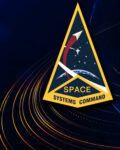In a novel approach to preparing for future lunar surface operations, European Space Agency (ESA) astronauts have completed a specialized helicopter training program designed to simulate the challenges of navigating and coordinating in the Moon’s rugged terrain. Conducted in collaboration with the German Aerospace Center (DLR), this training is part of ESA’s broader contribution to NASA’s Artemis program and aims to enhance astronaut readiness for complex off-Earth mobility and command coordination scenarios.
Training Objectives: Simulating Lunar Terrain from the Air
The rotary-wing flight training was conducted using DLR-operated helicopters over geologically analogous landscapes in Germany. The goal was not to teach astronauts how to pilot aircraft but rather to immerse them in a dynamic environment that mimics the visual and spatial challenges of operating on the Moon. From an altitude of several hundred meters, astronauts practiced identifying geological features, coordinating with ground teams, and managing mission-critical communications—skills directly transferable to future crewed lunar landings.
This approach mirrors similar techniques used by NASA during Apollo-era training, where astronauts flew in T-38 jets or helicopters over volcanic fields or desert terrains. However, modern simulation tools and enhanced C4ISR (Command, Control, Communications, Computers, Intelligence, Surveillance and Reconnaissance) integration now allow for more immersive mission rehearsal environments.
Participants and Program Structure
The ESA astronaut corps involved in this exercise included both veteran astronauts such as Thomas Pesquet as well as newer members from the 2022 class. The program was structured into multiple phases:
- Pre-flight briefings: Focused on mission objectives and terrain familiarization using satellite imagery and digital elevation models (DEMs).
- Flight execution: Astronauts observed terrain from helicopters while communicating with simulated mission control centers via secure comms links.
- Post-flight analysis: Debriefings included video playback synced with telemetry data for performance assessment.
The flights were conducted over areas like the Eifel volcanic region—chosen for its morphological similarity to lunar mare regions—and incorporated real-time decision-making drills involving target identification and route planning under time constraints.
C4ISR Integration into Astronaut Training
A key innovation in this training cycle was the integration of advanced C4ISR tools typically used in military aviation or ISR platforms. ESA collaborated with DLR’s Remote Sensing Technology Institute (IMF) to equip helicopters with high-resolution EO/IR sensors and real-time data links that fed into mobile ground stations simulating a lunar mission control environment.
This setup allowed astronauts to practice relaying sensor data back to Earth-based analysts while receiving updated tasking based on evolving mission parameters—a capability critical for sustained lunar exploration under Artemis’ “Sustained Presence” phase planned post-Artemis III.
The use of multi-domain command architecture also allowed testing of interoperability between ESA systems and NASA’s Deep Space Network protocols—an essential element given ESA’s role in providing components like the European Service Module (ESM) for Orion spacecraft.
Lunar Analogues: Why Helicopters Work
Helicopters offer a unique platform for simulating lunar surface operations due to their ability to hover at low altitudes while maintaining visual contact with terrain features. Unlike fixed-wing aircraft or simulators limited by field-of-view constraints, rotary-wing platforms can replicate the slow approach angles expected during crewed lander descents or rover traverses across uneven regolith-covered surfaces.
This method also enables practicing coordination between airborne observers (analogous to orbiting support craft or drones) and surface explorers—mirroring potential future use cases where uncrewed aerial vehicles (UAVs) scout ahead of human crews on planetary bodies.
Tactical Implications for Future Lunar Missions
The helicopter-based analog training underscores ESA’s commitment not only to human spaceflight but also to operational excellence in extraterrestrial environments. By leveraging military-style ISR tactics adapted for space exploration contexts—including geospatial intelligence gathering (GEOINT), real-time comms relay under latency constraints (~1.3 seconds Earth-Moon), and decentralized decision-making—the agency is preparing its crews for roles beyond science payload deployment.
This includes potential participation in security-related aspects of cislunar operations such as traffic management around Gateway or safeguarding critical infrastructure like power stations or ISRU sites on the Moon’s south pole region—a likely target area due to persistent illumination conditions favorable for solar power generation.
Looking Ahead: Integration into Artemis Mission Planning
This helicopter-based module is expected to be integrated into ESA’s standard astronaut curriculum by 2026 as part of its contribution toward Artemis IV-VI missions. It complements other analog programs such as PANGAEA (Planetary ANalogue Geological And Astrobiological Exercise for Astronauts), which focuses on geology fieldwork skills relevant for planetary exploration.
With increasing emphasis on international collaboration through programs like Gateway and I-HAB (International Habitat module), cross-training initiatives that blend aerospace engineering with tactical field ops are becoming central pillars of astronaut preparation pipelines across partner agencies including JAXA and CSA alongside NASA and ESA.










